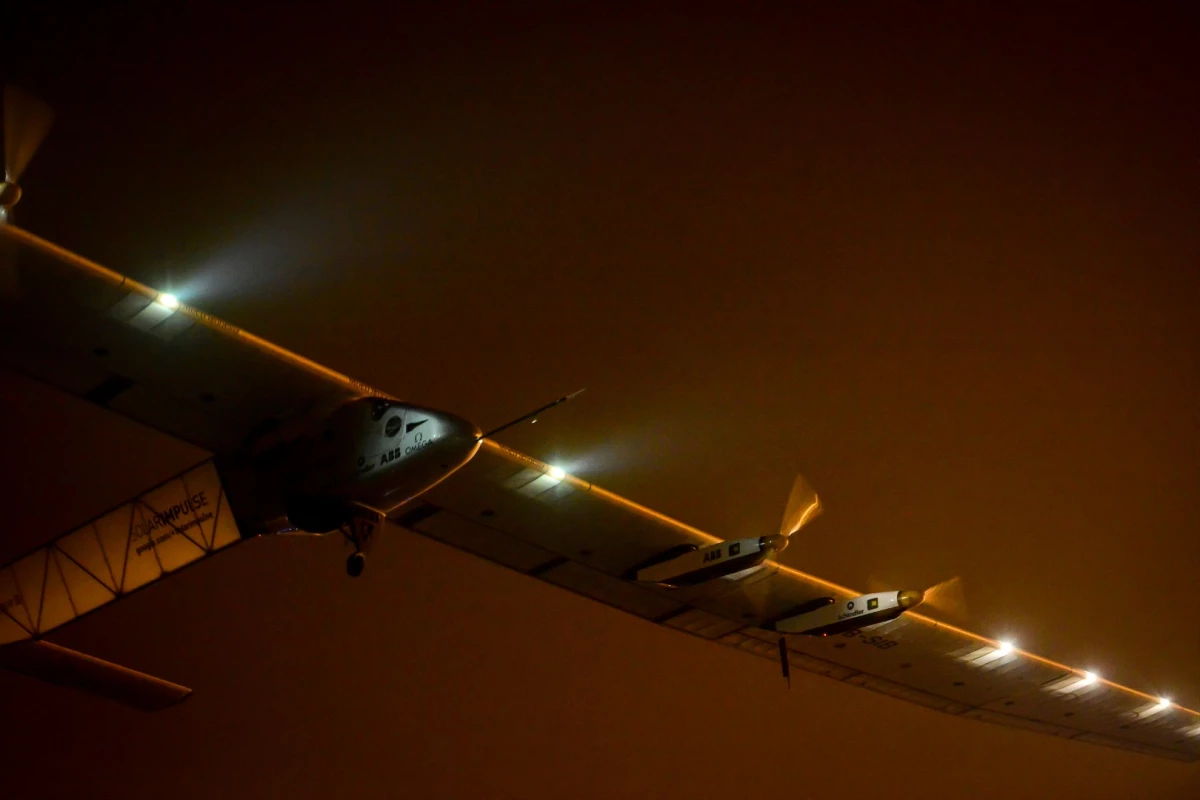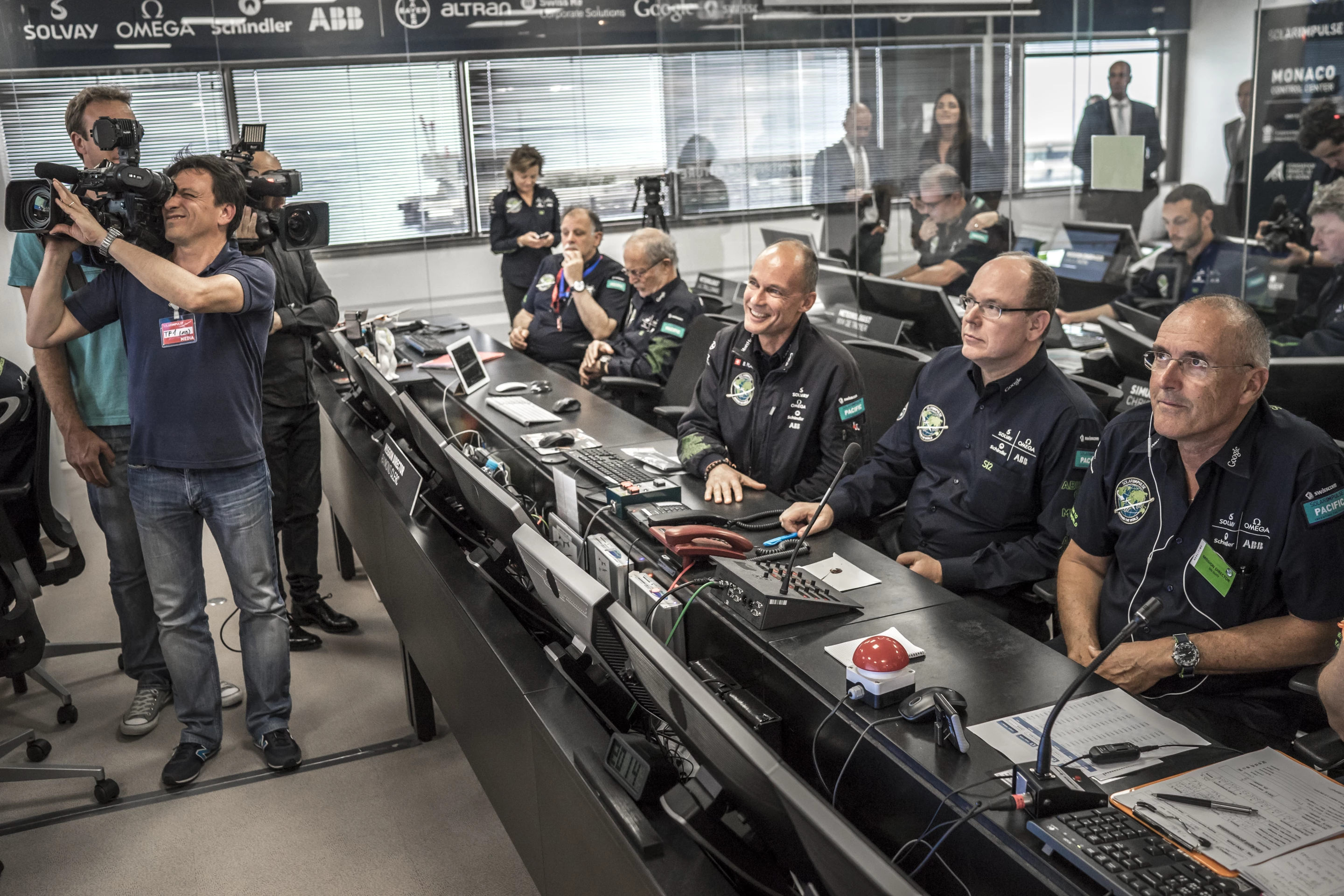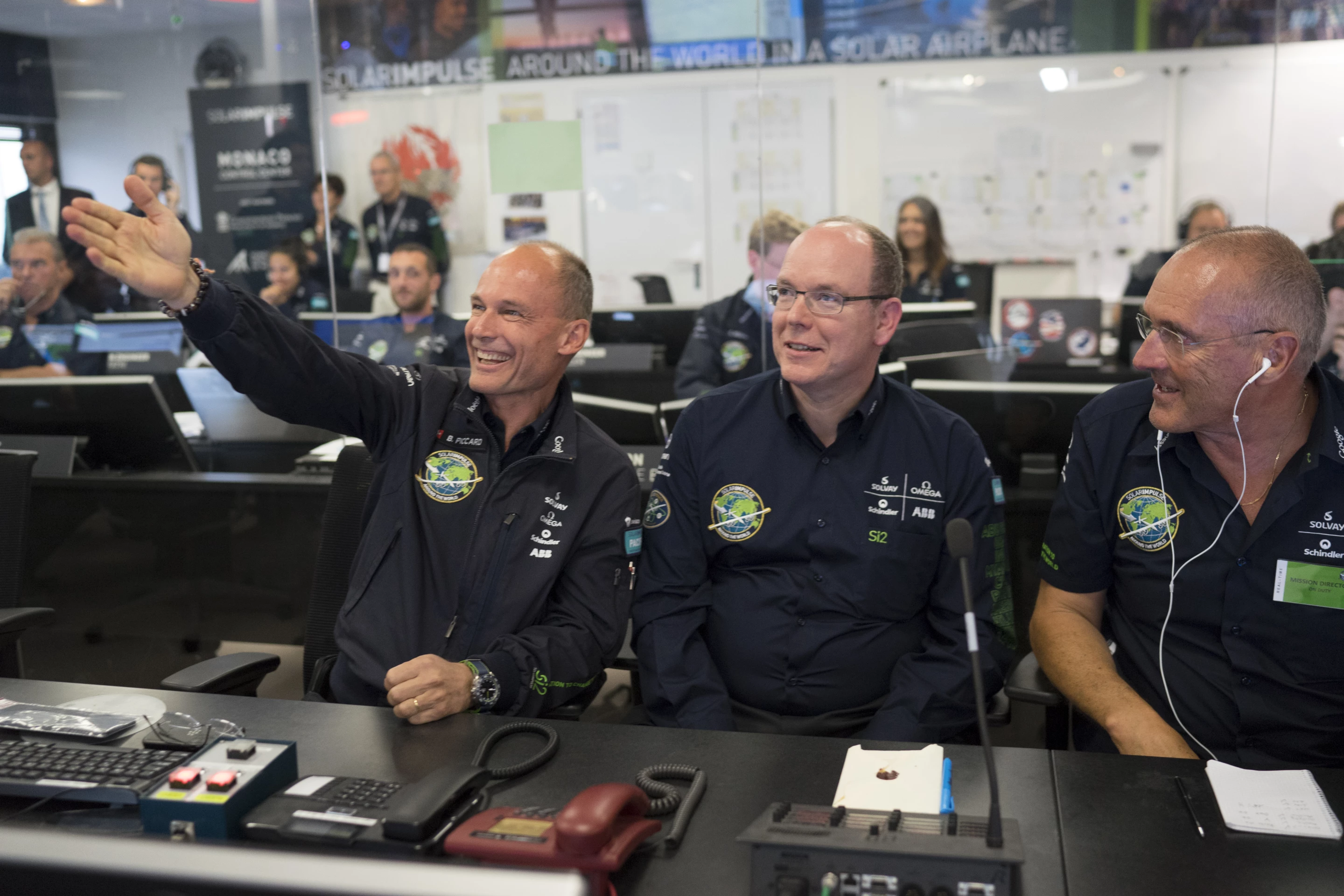With Swiss pilot André Borschberg at the controls, the solar-powered, single-pilot Solar Impulse 2 airplane took off from Nanjing Lukou Airport in China today bound for Hawaii on the longest leg of its round-the-world flight.
This isn't just a major leg of the Solar Impulse 2 solar-powered circumnavigation, it is also an attempt at the longest duration flight ever by a solo pilot in any type of aircraft. Confined to his cockpit not much larger than a first class airline seat, Borschberg will be in the air for 130 hours, or about five nights, as he flies 8,172 km (5,078 mi) on his way to the Hawaiian Islands. During this time, he will be in constant contact with the Mission Control Center in Monaco, which is monitoring the aircraft and conditions on the route in front of it.
With its 72-m (236-ft) wingspan, the Solar Impulse 2 is wider than a Boeing 747-8I, but weighs only about 2,300 kg (5,070 lb). Part of the reason for this is that it's made out of carbon fiber, employing a light single-ply technology used in competitive yachting which makes it three times lighter than paper. Its four electric motors are powered by 17,248 solar cells 135 microns thick. These are built into the wing and protected by a fluorine copolymer film, which feed banks of high-density lithium polymer batteries weighing 633 kg (1,395 lb).
In flight, the plane is charged by the Sun during the day and powered by batteries at night for "virtually unlimited autonomy" and an average speed of 50 to 100 km/h (31 to 62 mph).

Solar Impulse 2 began its flight in March 9 at Abu Dhabi in the UAE. It then flew in hops to Muscat, Oman; Ahmedabad and Varanasi, India; Mandalay, Burma (Myanmar); and Chongqing, China before reaching Nanjing. If the aircraft lands in Hawaii successfully, its next stop is Phoenix, Arizona.
"This is the exploration leg of the flight around the world. It will be an important milestone for aviation with an airplane capable for the first time ever to fly with unlimited endurance. This represents an extraordinary illustration of technological innovation which André initiated and led during the last 12 years," says Bertrand Piccard, Solar Impulse Chairman, initiator and pilot.
The video below shows the takeoff of Solar Impulse 2 from Nanjing.
Source: Solar Impulse










